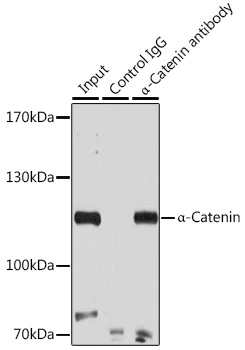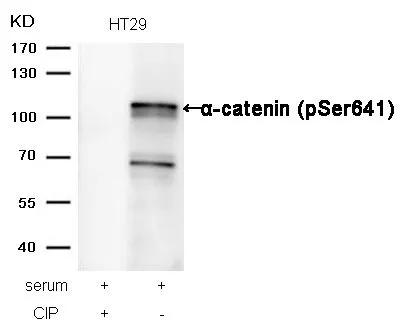alpha 1 Catenin (phospho Ser641) antibody
GTX79145
ApplicationsImmunoFluorescence, Western Blot, ImmunoCytoChemistry
Product group Antibodies
TargetCTNNA1
Overview
- SupplierGeneTex
- Product Namealpha 1 Catenin (phospho Ser641) antibody - Orthogonal Validated
- Delivery Days Customer9
- Application Supplier NoteWB: 1:500 - 1:1000. *Optimal dilutions/concentrations should be determined by the researcher.Not tested in other applications.
- ApplicationsImmunoFluorescence, Western Blot, ImmunoCytoChemistry
- CertificationResearch Use Only
- ClonalityPolyclonal
- ConjugateUnconjugated
- Gene ID1495
- Target nameCTNNA1
- Target descriptioncatenin alpha 1
- Target synonymsCAP102, MDBS2, MDPT2, catenin alpha-1, alpha-E-catenin, catenin (cadherin-associated protein), alpha 1, 102kDa, epididymis secretory sperm binding protein, renal carcinoma antigen NY-REN-13
- HostRabbit
- IsotypeIgG
- Protein IDP35221
- Protein NameCatenin alpha-1
- Scientific DescriptionThis gene encodes a member of the catenin family of proteins that play an important role in cell adhesion process by connecting cadherins located on the plasma membrane to the actin filaments inside the cell. The encoded mechanosensing protein contains three vinculin homology domains and undergoes conformational changes in response to cytoskeletal tension, resulting in the reconfiguration of cadherin-actin filament connections. Certain mutations in this gene cause butterfly-shaped pigment dystrophy. [provided by RefSeq, May 2016]
- Storage Instruction-20°C or -80°C,2°C to 8°C
- UNSPSC12352203

![WB analysis of 25 ug of Hela (lane 1), A431 (lane 2) and mouse brain (lane 3) using GTX17259 alpha Catenin antibody [1G5]. Dilution : 1:500](https://www.genetex.com/upload/website/prouct_img/normal/GTX17259/GTX17259_1552_WB_w_23060620_354.webp)




